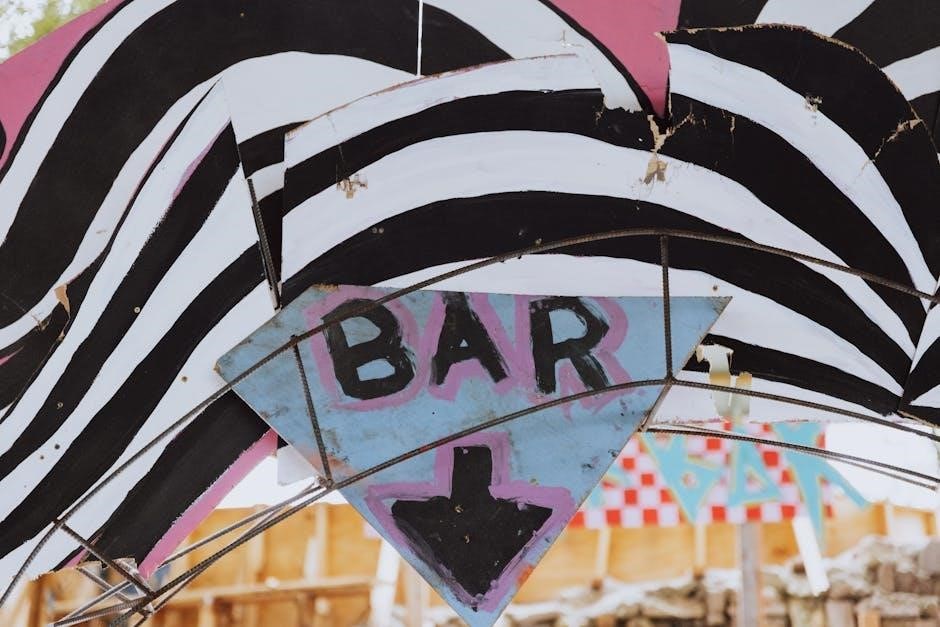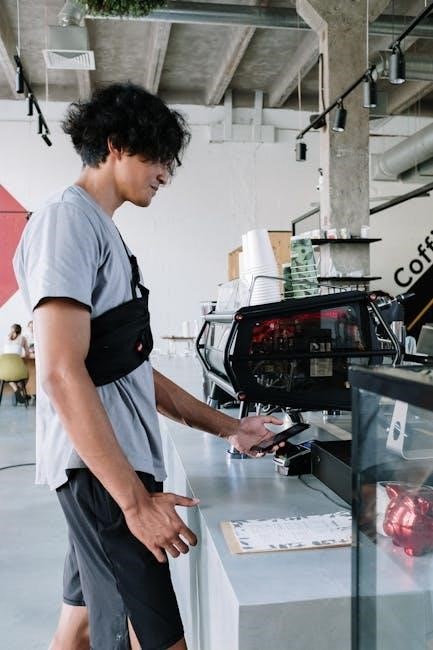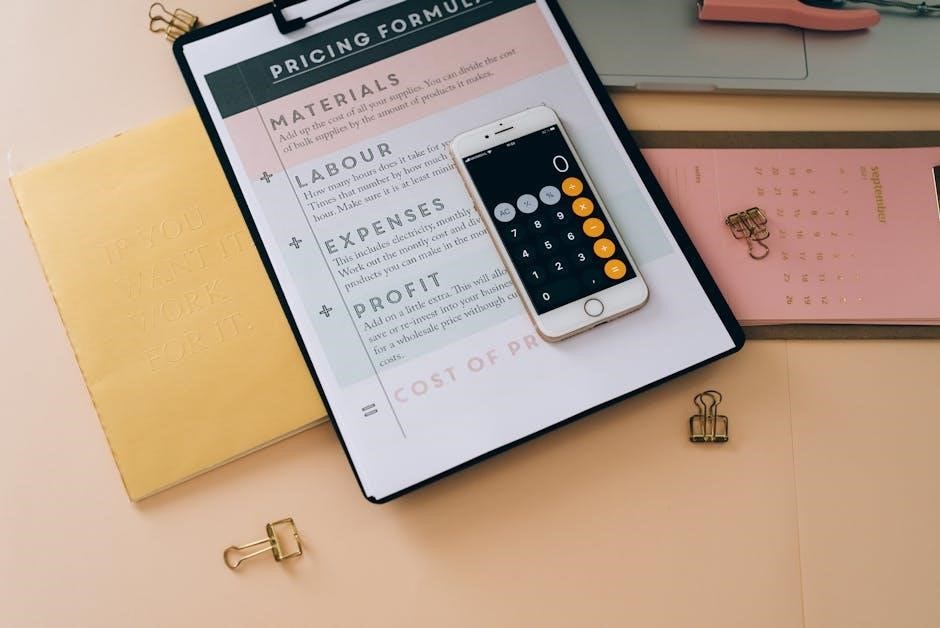Navigating the world of mobile bar pricing requires understanding various contributing elements. From equipment to staffing and permits‚ numerous factors influence the final cost. This guide provides an overview to help event organizers and mobile bar operators create transparent and competitive pricing strategies.
Factors Influencing Mobile Bar Service Pricing
Several key elements dictate the pricing of mobile bar services. The cost of equipment‚ including portable bars‚ glassware‚ and bar tools‚ plays a vital role. Staffing expenses for trained bartenders and support personnel are another significant factor. Transportation costs‚ influenced by distance and fuel prices‚ also contribute to the overall price.
Liquor license acquisition costs‚ if the bar provides alcohol‚ can greatly impact pricing. Insurance costs‚ essential for liability coverage‚ must be factored in. Profit margins‚ which ensure the business’s sustainability‚ also influence the final price. The scale of operations and event location also play a crucial role.
Customization options‚ such as themed bars or specialized drink menus‚ can increase pricing. Competitor analysis is crucial to ensure competitive rates. Demand fluctuations‚ influenced by seasonality and event types‚ can lead to dynamic pricing. Balancing these factors is key to establishing a fair and profitable pricing structure.
Cost of Equipment
The initial investment in equipment represents a substantial portion of the expenses for a mobile bar business. Essential items range from basic bar tools to more elaborate setups‚ influencing overall costs significantly. Consider the necessity of bar tools and accessories like shakers‚ strainers‚ and mixing spoons. Furthermore‚ glassware is crucial for serving various beverages and must be accounted for in the budget.
The mobile bar unit itself varies widely in price. Options range from cheaper alternatives‚ such as folding bars or tables with skirts‚ to more expensive modular or custom-built bars. The cost of a bar truck‚ likely the most expensive choice‚ should also be considered. Advanced equipment such as draft beer systems will also increase the total equipment expense;
Starting with the basics‚ one can expect to pay around $5‚000 for essential equipment. However‚ purchasing a new‚ fully-equipped bar truck could cost $150‚000 or more. Leasing or financing options are available‚ with monthly expenses potentially ranging from 3 to 10 of total revenue.
Staffing Costs

Staffing represents a significant operating expense for mobile bar businesses‚ directly impacting pricing and profitability. Labor costs are influenced by event location‚ average wages for bartenders‚ and additional personnel required for setup and service. Larger cities often have higher labor costs due to increased cost of living and demand for skilled bartenders.
Consider the number of bartenders needed based on event size and service expectations. You will also need to factor in wages for support staff involved in delivering‚ setting up‚ and breaking down the bar. Event organizers typically pay mobile bartenders around $50 per hour‚ plus tips‚ for open bar setups. For models where you sell each drink‚ factor in the cost of alcohol and ingredients.
Average monthly staffing costs can range from 10% to 25% of total revenue. Owning and operating the business by yourself‚ however‚ eliminates this expense entirely. As your business grows‚ you may need to consider additional staffing expenses to cover all events.
Transportation Costs
Transportation costs are a crucial element in the pricing structure of mobile bar services. Fuel and maintenance for the mobile bar can range from $200 to $400 monthly‚ depending on usage frequency and distance traveled. Fuel costs can fluctuate‚ making it essential to monitor and factor into the operating budget. Keeping a close eye on fuel efficiency is vital.
Additional transportation expenses include protective coverings‚ straps‚ and dollies for equipment. Unless you opt for a mobile bar truck or own a pickup truck‚ you may need to purchase an equipment trailer‚ which typically costs $500 to $5‚000. The distance to events and the number of events per month also impact transportation costs. Remote locations may incur additional travel charges.
Aim for transportation expenses to amount to about 3% to 7% of total revenue. Be prepared for rises in fuel prices and potential vehicle breakdowns. Accurate budgeting and cost management are essential for maintaining profitability.
Liquor License Acquisition Costs
The acquisition costs of a liquor license can significantly impact the overall pricing structure for mobile bar services‚ especially if you decide not to operate as a dry hire. These costs vary depending on location‚ legal requirements‚ and other specific factors‚ influencing the final price that clients pay. Regulations and compliance requirements can also add to the expenses.
In some regions‚ obtaining a liquor license for a mobile bar that provides alcohol may be restricted. For example‚ the Pennsylvania Liquor Control Board states that you cannot operate a mobile bar business that provides alcohol. However‚ you can provide mobile bartending services for hire where event hosts provide alcohol‚ and you simply make the drinks.
Understanding local laws is crucial for budgeting and setting prices. Mobile bars also require additional insurance‚ which increases operating costs. It’s important to focus on the essentials first and let your business fund upgrades over time.
Insurance Costs
Insurance costs are a critical factor in determining the pricing of mobile bar services. They ensure the business is protected against potential liabilities and unforeseen events. Adequate coverage can significantly impact operational expenses and must be factored into the overall pricing structure to maintain profitability. The cost of insurance can vary based on several factors‚ including the scale of operations‚ the types of services offered‚ and the location of events.
Mobile bars also require additional insurance that tends to increase operating costs monthly. Industry benchmarks suggest that the typical profit margin for a Mobile Craft Cocktail Bar ranges between 15% to 30%. This range takes into account the costs associated with insurance‚ among other factors.
At Mobile Bev. Pros‚ we recommend you focus on the essentials first and let your business fund upgrades over time.
Profit Margins
Profit margins are a critical aspect of any mobile bar business. They determine the financial health and sustainability of the operation. Understanding how to calculate and optimize profit margins is essential for long-term success. Several factors influence profit margins‚ including pricing strategies‚ cost management‚ and revenue generation. Businesses must carefully analyze these factors to set appropriate prices and maximize profitability.
Profit margins for bartender-for-hire/open bar business models can be as high as 88%‚ while models where you sell each drink typically have a 20 to 40% profit margin due to increased costs.
The profit margin for a mobile … various factors such as location‚ menu diversity‚ competition‚ and seasonality. Industry benchmarks suggest that the typical profit margin for a Mobile Craft Cocktail Bar ranges between 15 to 30.
Revenue Potential

The revenue potential of a mobile bar business is influenced by many factors. These include location‚ type of events‚ marketing strategies‚ and pricing models. Understanding these elements is critical for maximizing income and achieving financial success.
Mobile bar businesses can certainly be profitable. However‚ to achieve profitability‚ you’ll need to maximize revenue while managing your expenses. While your potential profit margins depend on several factors‚ one of the most important is your business model.
For instance‚ if you’re an owner-operator serving open bar events‚ you’ll be able to achieve huge net profit margins because you don’t need to pay for the cost of alcohol or staff. In fact‚ our analysis of costs suggests potential profit margins as high as 88!
The average range for annual mobile bar revenue typically falls between 52‚000 and 260‚000. This is equal to a monthly revenue of 4‚000 and 22‚000.
Business Models and Pricing Strategies
Mobile bar businesses can adopt various business models‚ each impacting pricing strategies. Bartender-for-hire models‚ which involve serving drinks at events where hosts provide the alcohol‚ often yield high-profit margins.
Alternatively‚ models where each drink is sold individually incur higher costs but offer greater revenue potential. Factors such as location‚ local regulations‚ and target market preferences should dictate the chosen business model.
Pricing strategies can be tailored to different event types and client needs. Some mobile bars offer flat rates for open bar services‚ while others charge per drink or create customized packages.
A common strategy is to set prices by marking up the cost of ingredients and labor by a certain percentage. Basic bars with limited drink options are generally less expensive than fully stocked bars with a wide array of drinks and special features like LED lighting or custom branding. The events location can affect the cost. Remote locations might incur additional travel charges‚ whereas events…
Careful consideration of these factors is essential for developing a pricing approach that maximizes profitability and attracts clients.
Competitor Analysis

A thorough competitor analysis is crucial for establishing a competitive edge in the mobile bar market. Begin by identifying mobile bar services operating within your target geographic area. Examine their pricing structures‚ service offerings‚ and target markets. Determine their strengths and weaknesses.

Are they offering unique packages or specializing in specific types of events? How do their prices compare to the cost of ingredients and labor? Do they offer basic setups that are smaller‚ easy to transport‚ yet less impressive will cost less? On the other hand‚ a horse trailer converted into a bar will command a higher price point? Not every event is a wedding but this is the top of your market; You can work your way down from there‚ checking out other mobile bars‚ venues‚ caterers.
Evaluate their online presence and customer reviews to gauge customer satisfaction. This research will inform your pricing decisions‚ allowing you to position your services competitively while highlighting unique value propositions. By understanding the competitive landscape‚ you can refine your business model‚ pricing strategies‚ and marketing efforts to attract clients and secure a sustainable market share.
